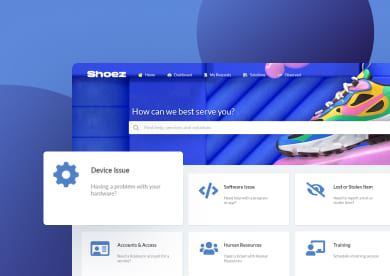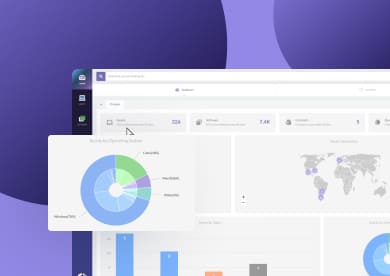A software license audit is a formal review of how an organization uses its software to ensure it aligns with the terms of its licensing agreements. Put simply, it compares what the company is entitled to use (its purchased licenses) with what it's actually using.
As part of effective Software License Management (SLM), these audits help organizations avoid legal and financial risks, uncover hidden inefficiencies, and strengthen overall governance.
What is a software license audit?
A software license audit is a specific type of software audit that focuses exclusively on verifying compliance with licensing agreements. In simple terms, it checks whether an organization’s actual software usage matches the rights it has purchased.
These audits may be conducted internally by IT or compliance teams, externally by software vendors, or by third-party firms acting on a vendor’s behalf. They typically review installed applications, user counts, and license terms (including subscription conditions, usage rights, and any restrictions) to ensure everything aligns with contractual obligations.
Why do you need software license auditing?
The main reason why software license audits are essential is because they allow organizations to detect compliance issues before they escalate into legal or financial risks.
These proactive audits also deliver added value beyond compliance. They reveal unused or underutilized licenses, highlight opportunities for cost optimization, and provide reliable data for IT planning and governance.
In other words, they put you in control, so when a vendor audit does come around, you’re already prepared.
Key benefits of internal software license auditing
- Stay ahead of vendor audits — With 62% of organizations audited by a major vendor in the last year (Unisphere Research, 2025), internal audits help you identify and resolve issues before external reviewers find them.
- Reduce financial exposure — Minimize the risk of unexpected charges, penalties, or forced purchases.
- Identify unused or underutilized licenses — Reclaim wasted spend and reallocate resources where they’re most needed.
- Improve budgeting and forecasting — Build accurate software spend plans based on real usage data.
- Strengthen governance — Ensure software usage aligns with contractual, security, and organizational policies.
What triggers a software license audit?
A software license audit can be triggered by several factors, most of them tied to vendor monitoring or compliance concerns. Understanding these triggers helps organizations know what to watch for and prepare accordingly.
Common triggers for software license audits include:
- Unusual usage patterns — A sudden spike in users, installations, or consumption of features may raise red flags.
- Missed renewals or contract changes — Lapses in subscription renewals or switching license models often prompt vendor reviews.
- Vendor policy updates — New licensing terms (e.g., moving from perpetual to subscription models) frequently lead to audits.
- Cloud and virtualization complexity — Expanding into hybrid or multi-cloud environments makes compliance harder to track.
- Acquisitions or mergers — Structural changes can draw vendor attention to ensure inherited licenses are compliant.
- Previous audit findings — Organizations flagged in the past may be re-audited more frequently.
- Anonymous tips or vendor suspicions — Vendors sometimes act on reports of noncompliance from employees, competitors, or partners.
The software license audit process: Step by step
Performing a software license audit might sound intimidating, but it doesn’t have to be. While it can be done manually (especially in smaller environments), using a software license audit tool is now the smartest way to automate repetitive tasks, reduce human error, and save time.
Whether you're preparing for an external audit or just doing a proactive self-check, here's how to approach it.
#1: Define the audit scope
Start by determining exactly what the audit will cover. Are you focusing on specific departments, cloud apps, or your entire software environment? Clearly outlining the scope helps keep things organized and prevents the process from becoming overwhelming.
#2: Build your software inventory
List all the software installed across your organization. This includes desktop apps, cloud-based services, and anything used in production, test, or dev environments. Be sure to include details like version numbers, device counts, and license types.
#3: Gather license documentation
Now it’s time to match what’s installed with what you’re actually entitled to use. That means collecting license agreements, purchase records, invoices, and renewal contracts. Having this all in one place makes the next steps much easier.
#4: Compare usage vs. entitlements
This is the core of the audit. Review how many users or installations each license covers, and compare it to your actual usage. Any gaps (like using more licenses than you own, or licenses installed but never used) should be flagged.
#5: Identify risks and fix gaps
Once you spot inconsistencies, take action. This could mean uninstalling unused software, buying additional licenses, or revising how certain tools are deployed. If you’re consistently overusing a certain product, it might be time to renegotiate your contract or switch to a different license model.
#6: Document everything in a compliance report
Create a simple report that outlines your findings, the actions taken, and your current compliance status. This report is incredibly helpful if you ever face a vendor audit — and it's a solid reference point for future audits and budget planning.
#7: Repeat the process regularly
Treat license audits like any other IT hygiene task. Running a self-audit regularly helps you stay ahead of surprises, keep costs under control, and be ready for whatever your vendors throw your way.
Using InvGate Asset Management as your software license audit tool

InvGate Asset Management offers a wide range of features to perform an internal software license audit and stay fully prepared for vendor reviews. The following are some (but not all) of the capabilities that help you carry out a complete software license compliance audit:
- Centralized software and license inventory — Build a complete inventory of all applications and connect them directly to licenses, users, devices, and contracts. All license data (terms, renewal dates, usage limits) is consolidated in one place.
- Software metering and real-time usage tracking — InvGate’s Agent monitors installed applications and tracks actual usage. This provides accurate data to identify underutilized licenses, detect unauthorized software, and ensure the right people have the right tools.
- License compliance monitoring — The Software Compliance module automatically cross-references contracts with real usage data. It flags unlicensed installations, calculates true-up costs, and detects low-usage licenses that can be reassigned or canceled.
- Unauthorized software detection and blocking — Beyond monitoring, InvGate can automatically detect and ban unauthorized or unapproved applications, helping you reduce compliance risks and improve security.
- Cost control and Contract Management — Link software licenses with contracts, devices, and users to track costs, set renewal alerts, and avoid surprises. The Contracts section centralizes insights into spending, expiration dates, and available licenses.
- Automation, alerts, and smart tags — Create automated workflows, apply smart tags, and receive proactive alerts to never miss a renewal date or license threshold.
- Custom dashboards — Build tailored dashboards with charts and KPIs to track compliance status, license usage, and renewal cycles at a glance.
- Scheduled reports — Generate and schedule software license audit reports to be sent periodically to stakeholders, ensuring ongoing visibility and accountability.
With these features, InvGate Asset Management not only simplifies auditing software licenses but also helps you stay ahead of vendor reviews, optimize costs, and maintain continuous compliance.
If you’re ready to strengthen your software license audit process, you can start a free 30-day trial today and see firsthand how InvGate makes internal software license auditing easier and more effective.
Software license audit best practices
#1: Choose the right software license audit tool
Relying on spreadsheets or manual checks can quickly become overwhelming as your software environment grows.
Using a dedicated IT audit software or an IT Asset Management software like InvGate Asset Management helps automate discovery, track usage in real time, and generate accurate compliance data. This ensures your software license audit process is both efficient and reliable.
#2: Create an internal software license audit program
Treating audits as one-off events is risky. Instead, establish an ongoing software license audit program that sets frequency, responsibilities, and clear policies. A structured approach ensures that your organization is always audit-ready and reduces the stress when a vendor review arrives.
#3: Use a software license audit template or checklist
A software license audit template or software license audit checklist provides a repeatable framework for each audit cycle. These resources make it easier to standardize how you audit software licenses, ensuring that nothing slips through the cracks when preparing for a review.
#4: Consider software license audit certification
While not a strict requirement, obtaining a software license audit certification can add credibility to your process and demonstrate to vendors and stakeholders that your organization follows industry best practices. It also helps teams build internal expertise and confidence when preparing for a software license audit.
#5: Establish a clear software license audit policy
A software license audit policy formalizes expectations and rules around software usage, renewals, and compliance checks. By defining how to do a software license audit internally, you create accountability across departments and reduce the chances of accidental non-compliance.
#6: Monitor results with reports and dashboards
Finally, make your audits actionable by creating a software license audit report after each review and sharing it with stakeholders. Combine it with custom dashboards to continuously monitor compliance metrics. Having a clear software license audit response strategy ensures you can act quickly if issues are detected.















